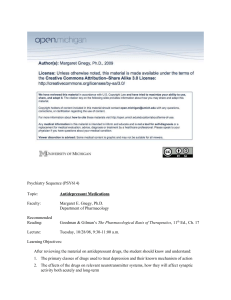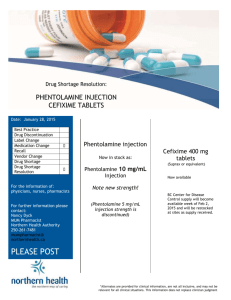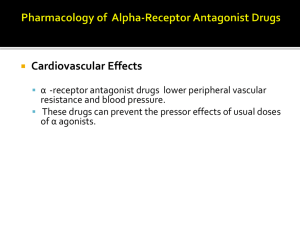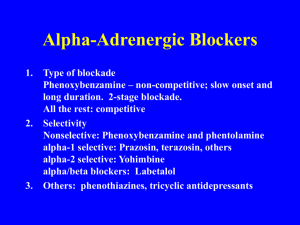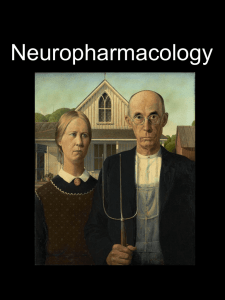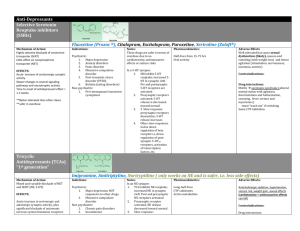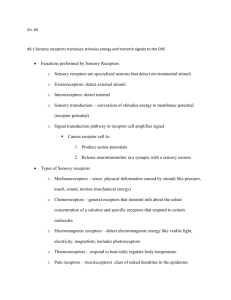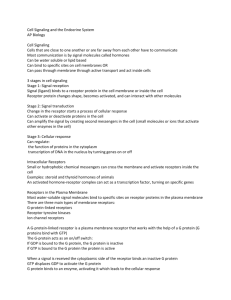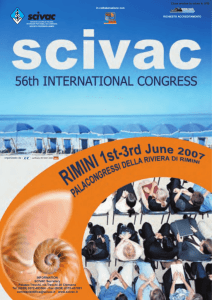test
advertisement
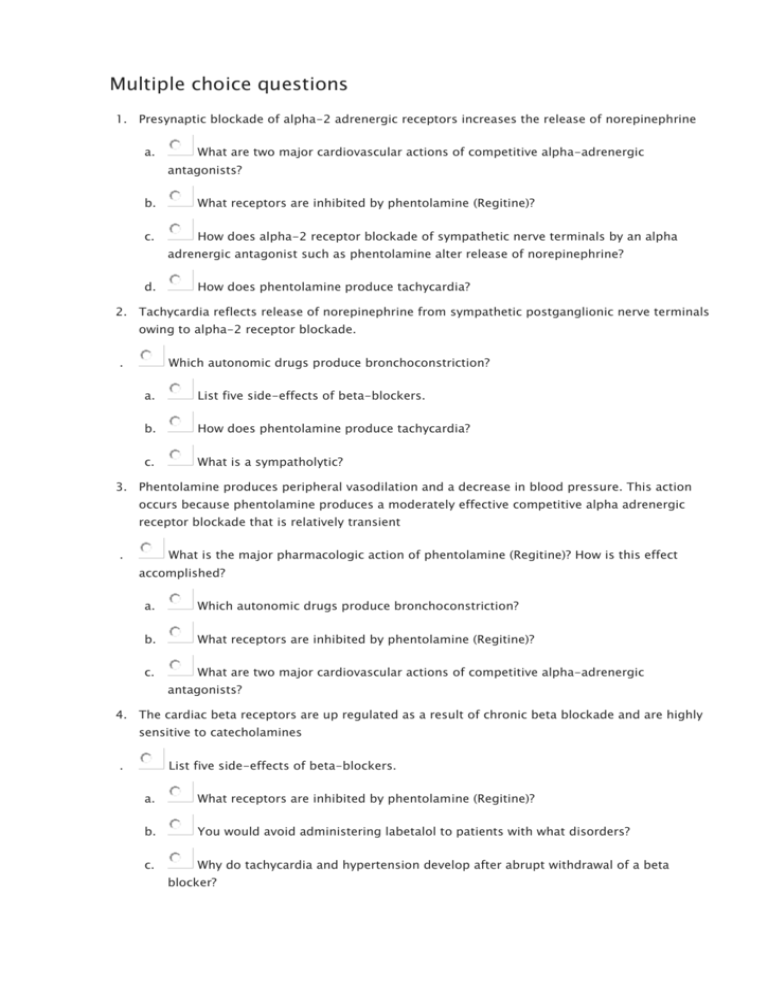
Multiple choice questions 1. Presynaptic blockade of alpha-2 adrenergic receptors increases the release of norepinephrine a. What are two major cardiovascular actions of competitive alpha-adrenergic antagonists? b. What receptors are inhibited by phentolamine (Regitine)? c. How does alpha-2 receptor blockade of sympathetic nerve terminals by an alpha adrenergic antagonist such as phentolamine alter release of norepinephrine? d. How does phentolamine produce tachycardia? 2. Tachycardia reflects release of norepinephrine from sympathetic postganglionic nerve terminals owing to alpha-2 receptor blockade. . Which autonomic drugs produce bronchoconstriction? a. List five side-effects of beta-blockers. b. How does phentolamine produce tachycardia? c. What is a sympatholytic? 3. Phentolamine produces peripheral vasodilation and a decrease in blood pressure. This action occurs because phentolamine produces a moderately effective competitive alpha adrenergic receptor blockade that is relatively transient . What is the major pharmacologic action of phentolamine (Regitine)? How is this effect accomplished? a. Which autonomic drugs produce bronchoconstriction? b. What receptors are inhibited by phentolamine (Regitine)? c. What are two major cardiovascular actions of competitive alpha-adrenergic antagonists? 4. The cardiac beta receptors are up regulated as a result of chronic beta blockade and are highly sensitive to catecholamines . List five side-effects of beta-blockers. a. What receptors are inhibited by phentolamine (Regitine)? b. You would avoid administering labetalol to patients with what disorders? c. Why do tachycardia and hypertension develop after abrupt withdrawal of a beta blocker? 5. Propranolol is a nonselective competitive antagonist of beta-adrenergic receptors. Blockade of beta-2 receptors can promote bronchospasm. Blockade of beta-1 receptors decreases heart rate and contractility. . What receptors are inhibited by phentolamine (Regitine)? a. What is the purpose of giving a beta blocker such as propranolol to anginal patients? b. Propranolol works on what receptors? How does propranolol affect the airway and the heart? c. What kind of drugs are phenoxybenzamine and prazosin, and how are they used in anesthesia? 5 True/False questions 1. What is a sympatholytic? → Side effects of beta-blockers include: (1) heart block (depressed conduction through the atrioventricular node), (2) worsening of congestive heart failure, (3) bronchospasm (beta-2 receptor blockade), (4) coronary artery constriction, and (5) inhibition of insulin release True False 2. What are two major cardiovascular actions of competitive alpha-adrenergic antagonists? → Tachycardia, hypertension, and possibly angina True False 3. In addition to its use in the preoperative preparation of the patient with pheochromocytoma, physicians use prazosin to treat essential hypertension and to decrease afterload in patients with congestive heart failure. Why is prazosin a better choice for treating patients than a non-selective alpha receptor antagonist? → Prazosin produces vasodilation by postsynaptic alpha-1 antagonism w/o increasing the release of norepinephrine from sympathetic postganglionic nerve terminals. Non-selective alpha antagonists produce vasodilation (alpha-1 blockade) but also increase the release of norepinephrine from sympathetic nerve terminals (presynaptic alpha-2 blockade). Prazosin is less likely than non-selective alpha-blocker to evoke tachycardia, secondary to increased release of norepinephrine from sympathetic postganglionic nerve terminals at the sinoatrial node (a presynaptic alpha-2 antagonistic action). True False 4. What are three manifestations of abrupt withdrawal of beta adrenergic receptor antagonists? → Decreased blood pressure secondary to vasodilation. There may also be reflex tachycardia. True False 5. What drugs are not appropriate for treating supraventricular tachycardia in the patient with bronchospastic disease? Why? → Tachycardia reflects release of norepinephrine from sympathetic postganglionic nerve terminals owing to alpha-2 receptor blockade. True False
